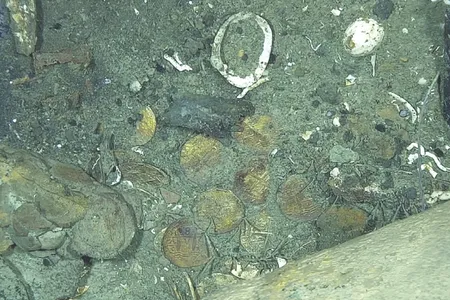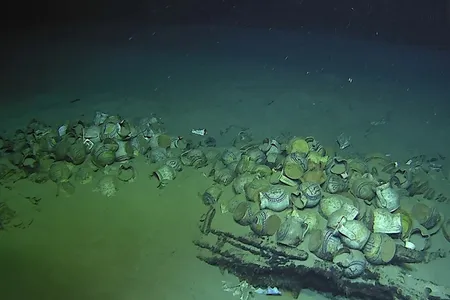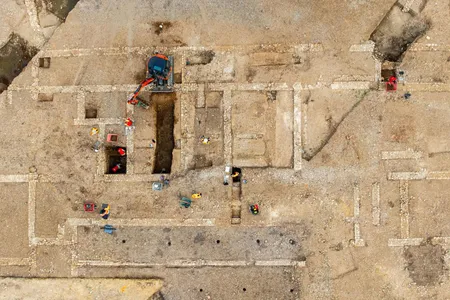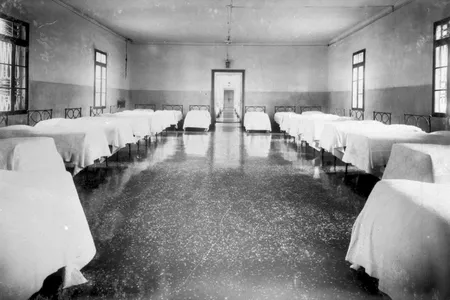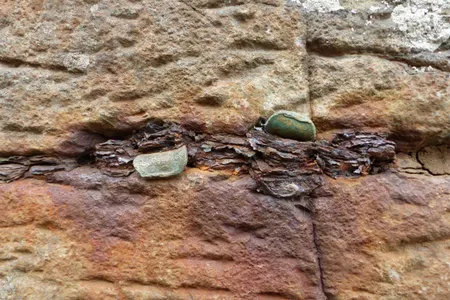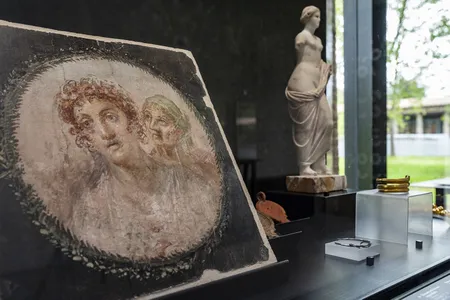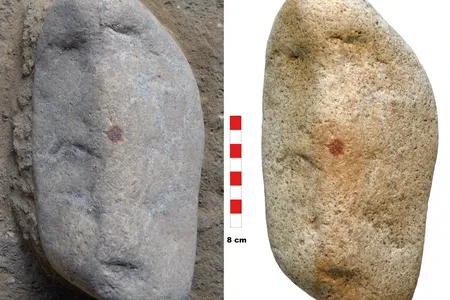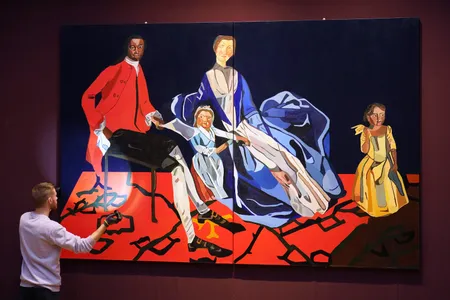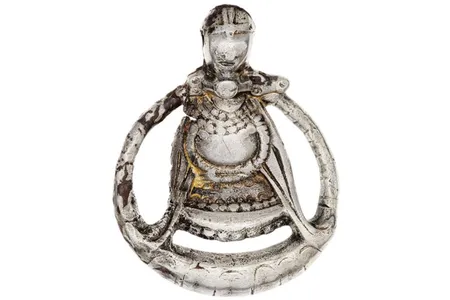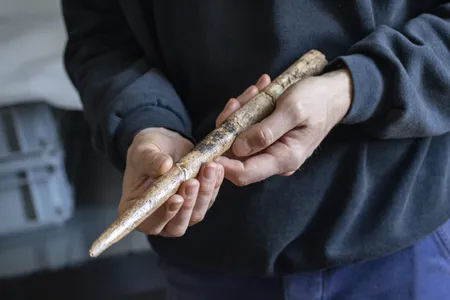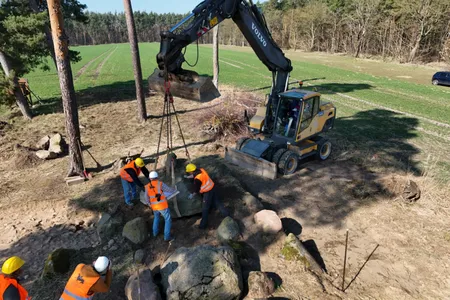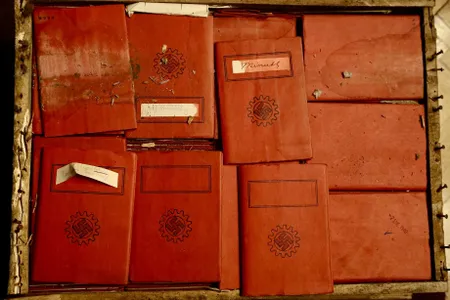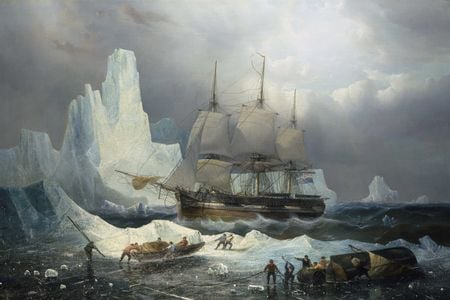This Rare, 6,000-Year-Old Limestone Fertility Figurine Could Be Poland’s Archaeological ‘Find of the Century’
Dating back to the Neolithic era, the so-called Venus of Kolobrzeg is the first artifact of its kind unearthed in the European country
These Gold Coins May Solve the Mystery of the ‘World’s Richest Shipwreck,’ Confirming Its Identity as a Legendary 18th-Century Galleon
Minted in Peru in 1707, the money bolsters the evidence that the wreck is the Spanish ship “San José,” which sank off the Colombian coast in 1708 with treasure worth billions on board
Rare 16th-Century Shipwreck Discovered at Record Depth in French Waters
The 98-foot-long vessel was transporting ceramic jugs, ceramic plates and metal bars when it sank off southeastern France nearly 500 years ago
This Viking Woman Was Buried With a Small Dog at Her Feet 1,000 Years Ago
Archaeologists unearthed the burial site during excavations in Norway. They say the discovery provides unique insights into the bonds humans form with their animals
Archaeologists Stumble Onto Sprawling Ancient Roman Villa During Construction of a Road in France
Located near Auxerre, the grand estate once possessed an exorbitant level of wealth, with thermal baths and heated floors
This Exiled Romanov Princess Fled the Bloodshed of the Russian Revolution and Reinvented Herself as a Fashion Icon
A new exhibition spotlights Natalia Pavlovna Paley, the granddaughter of a czar. She built a new life for herself in France and the U.S., appearing in films and on the pages of glossy magazines
Smuggled Out of France During a Bloody Revolution, Marie Antoinette’s Shimmering Pink Diamond Is Heading to Auction
The 10.38-carat gemstone, which carries an estimate of $3 million to $5 million, was owned by generations of European royalty
Tens of Thousands Were Treated for a Deadly Disease While Confined to Psychiatric Hospitals on These Two Venetian Islands
In the 19th and 20th centuries, San Servolo and San Clemente housed patients suffering from pellagrous insanity, a condition caused by a vitamin deficiency
Tourists Are Stuffing Coins Into the Cracks of the Giant’s Causeway, Damaging the Iconic Site in Northern Ireland
Authorities are urging visitors to stop wedging pocket change between the basalt columns, which are cracking and crumbling as the coins expand
What Was Daily Life Like for the Women Who Lived in Ancient Pompeii 2,000 Years Ago?
A new exhibition is spotlighting the women who have long been sidelined in histories of the Roman Empire—from mothers and weavers to entrepreneurs and influential tavern owners
Did a Neanderthal Who Lived 43,000 Years Ago Paint a Red Nose on a Rock That Looked Like a Face?
Researchers theorize that an adult male dipped his finger in red ocher and intentionally used the pigment to complete the face he saw on a small granite stone
Experts Think the Hagia Sophia Is in Danger. They’ve Got a Plan to Protect It From Earthquakes
Turkey is located near two fault lines, leaving the 1,500-year-old structure vulnerable to damage. Architects and engineers will be investigating how to best preserve it
From Peasant Fodder to Fine Dining, Feast on the Tasty History of How Snails and Oysters Became Luxury Foods
Humans have eaten mollusks for millennia, but they weren’t always viewed as elite treats
New Exhibition Features Contemporary Portraits Honoring Forgotten Black Abolitionists
Cambridge University’s Fitzwilliam Museum is spotlighting the men and women who fought to end slavery but received little attention from artists during their lifetimes
How Did Vikings View Pregnant Women? New Research Reveals That They Were Sometimes Depicted With Weapons
Researchers studied Old Norse literature and archaeological evidence to shed new light on women’s experiences of pregnancy during the Viking Age
Scientists Discover the Oldest Known Tools Made From Whale Bones, Crafted in Western Europe 20,000 Years Ago
Stone Age humans scavenged the skeletons of several whale species along the Bay of Biscay in what is now southwestern France and northern Spain, according to a new study
Where Was Soccer Invented? A New Archaeological Discovery Suggests Scotland, Not England, Was the Sport’s Birthplace
Archaeologists say they’ve found the ruins of a soccer field in southwest Scotland that date to the 17th century
This German Town Carefully Reconstructed a 5,500-Year-Old Megalithic Monument
After years of excavation and study, archaeologists have restored the Küsterberg burial site to its original layout to celebrate the annual European Day of Megalithic Culture
Boxes Full of Nazi Propaganda Discovered in the Basement of Argentina’s Supreme Court
Workers found crates packed with swastika-covered notebooks, postcards and photographs while preparing to move the court’s archives to a new museum
The Shipwrecks From John Franklin’s Doomed Arctic Expedition Were Exactly Where the Inuit Said They Would Be
In May 1845, 129 British officers and crew members set out in search of the Northwest Passage on HMS “Erebus” and HMS “Terror.” None returned
Page 2 of 69

